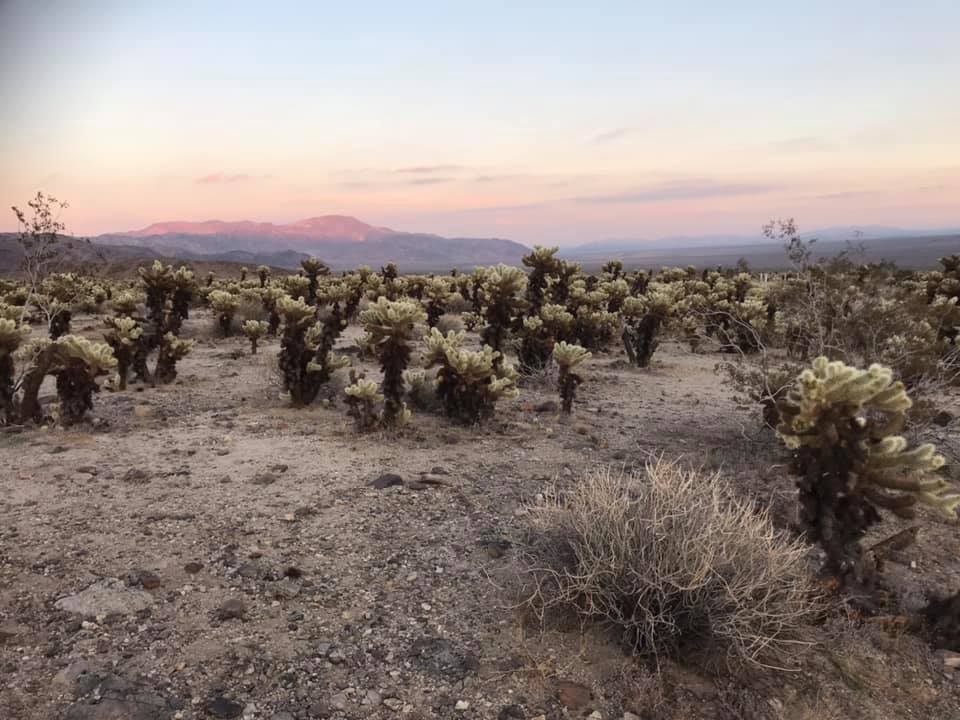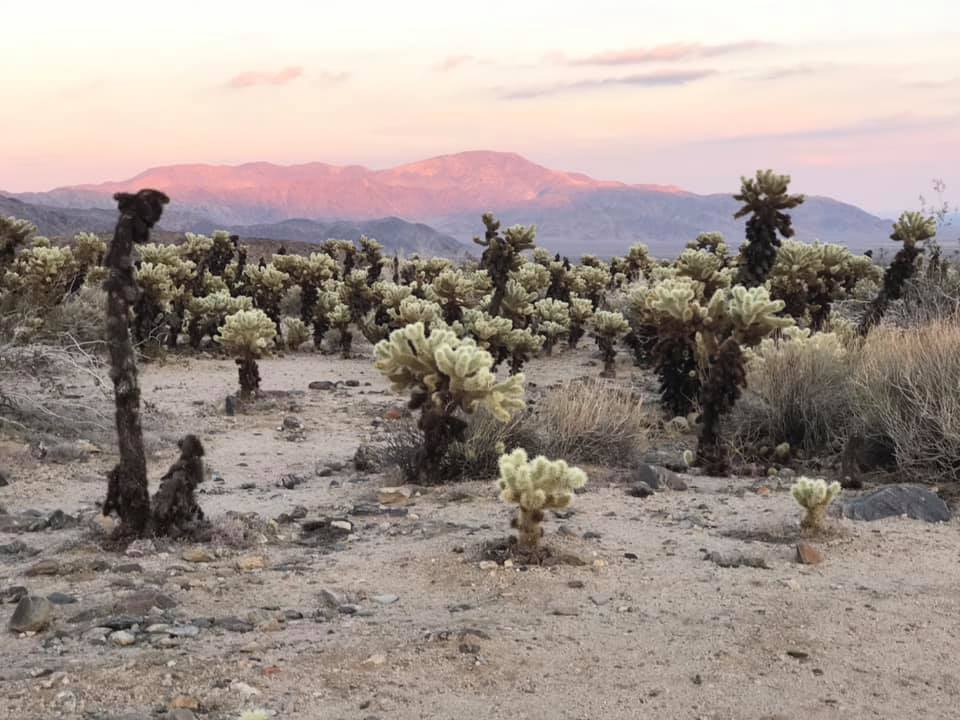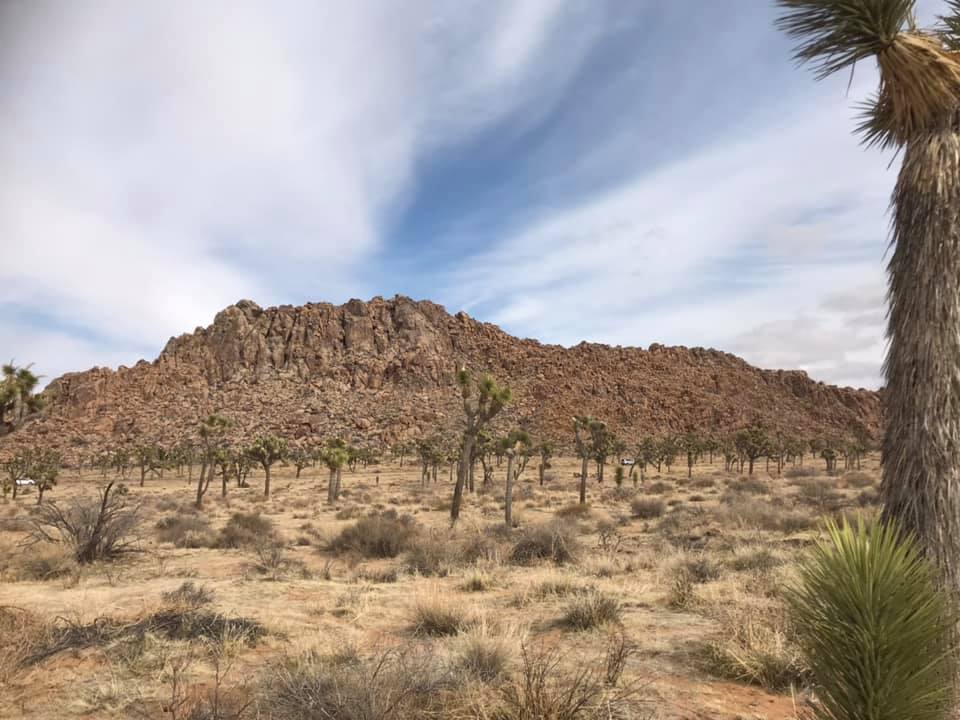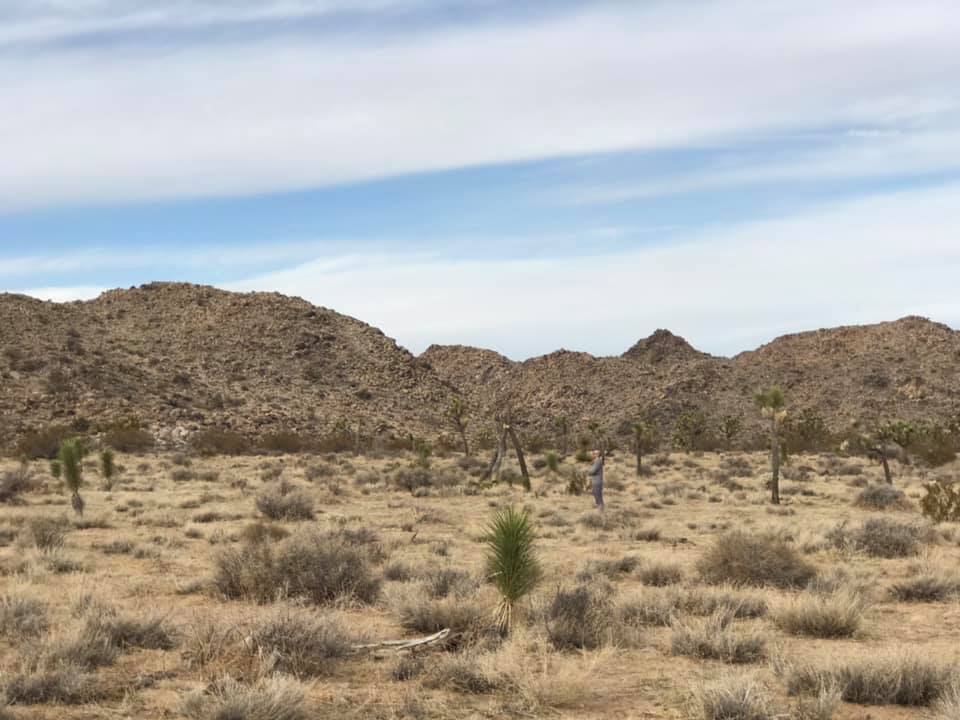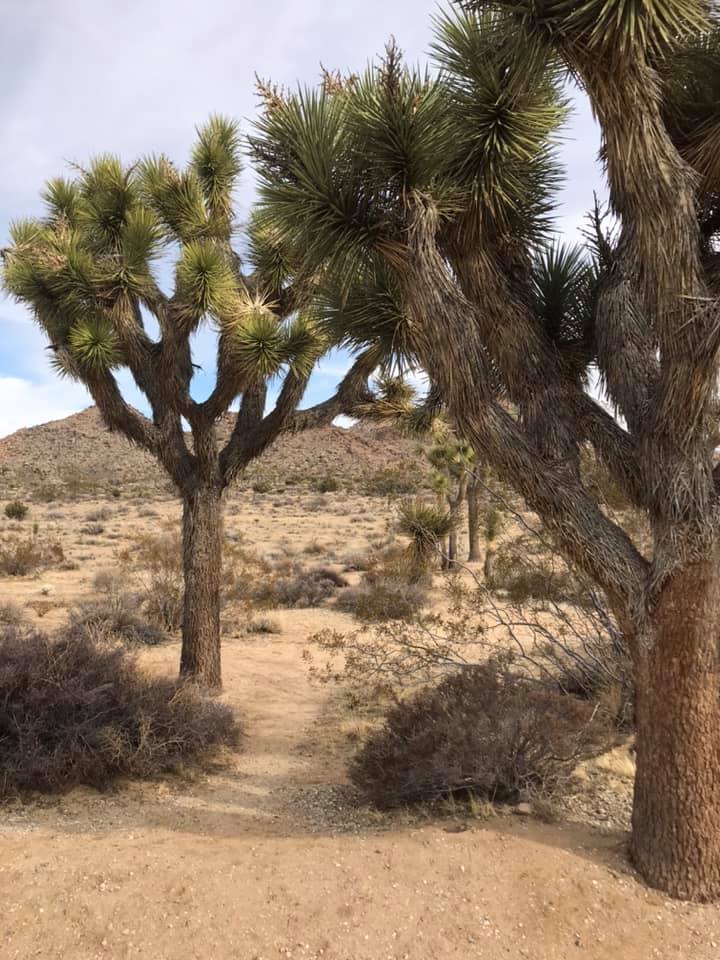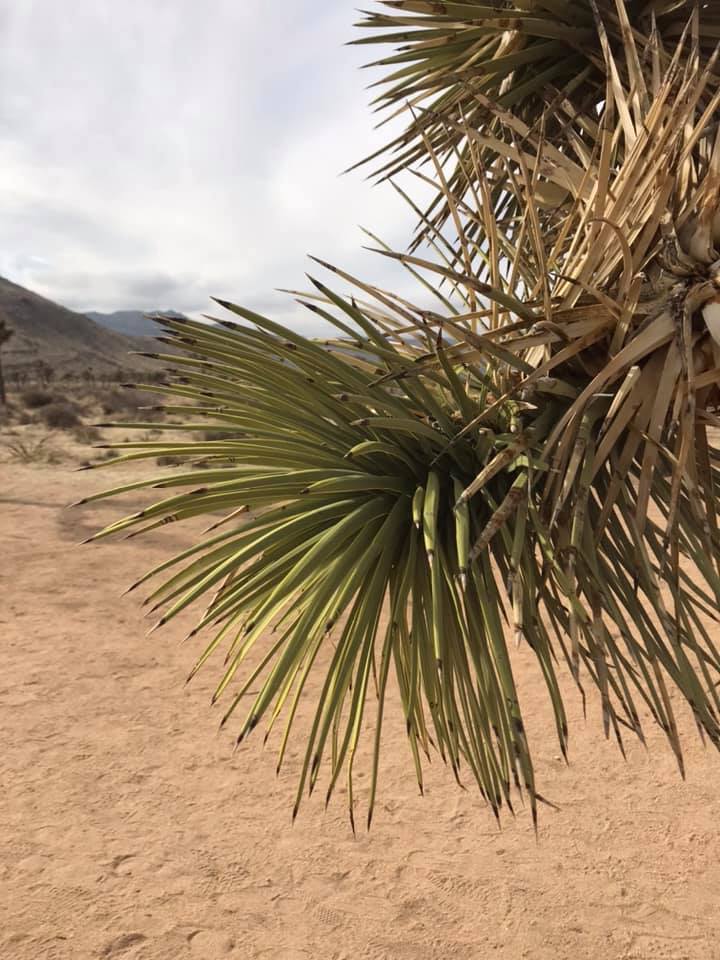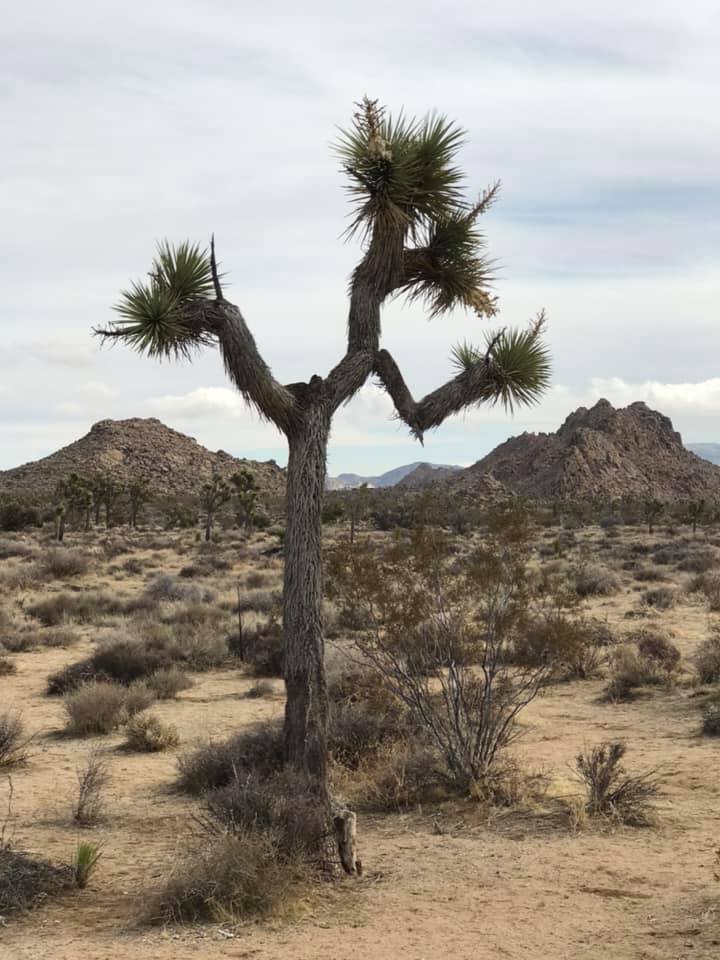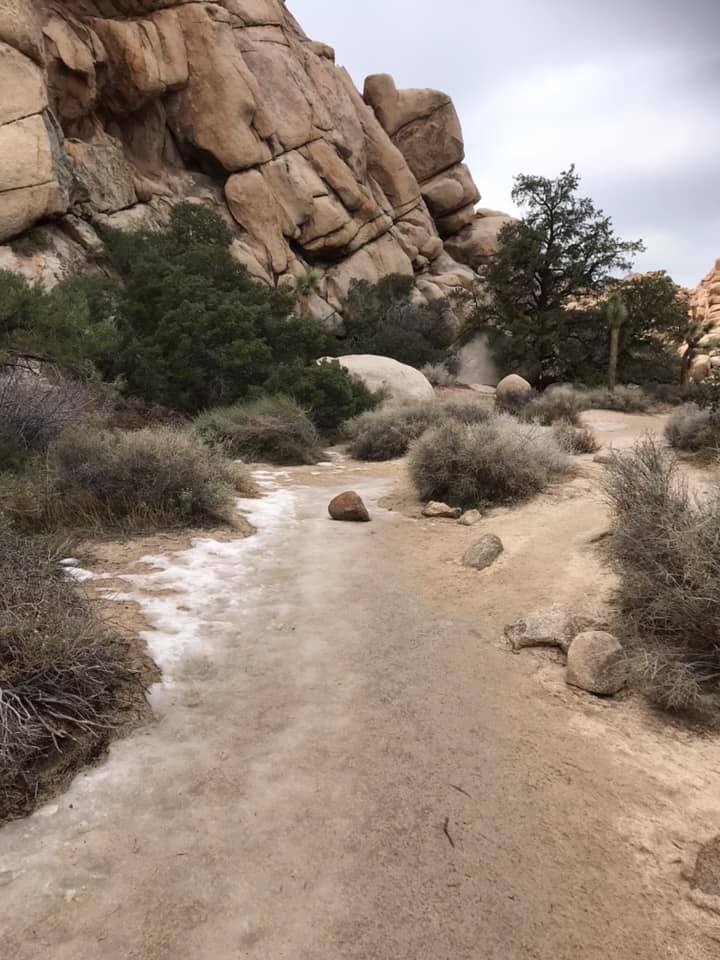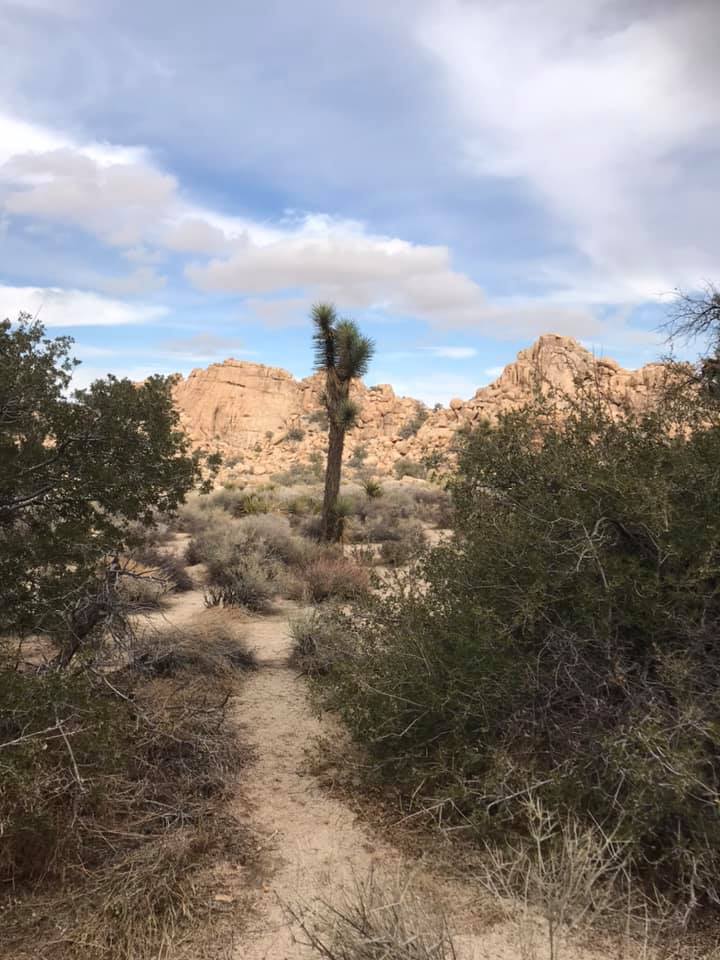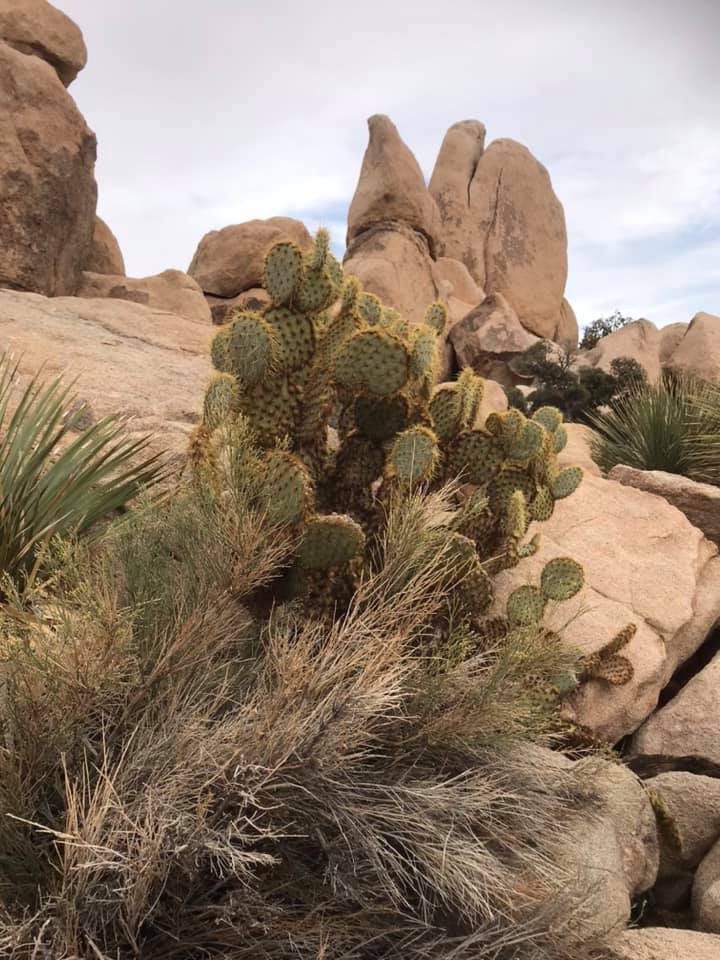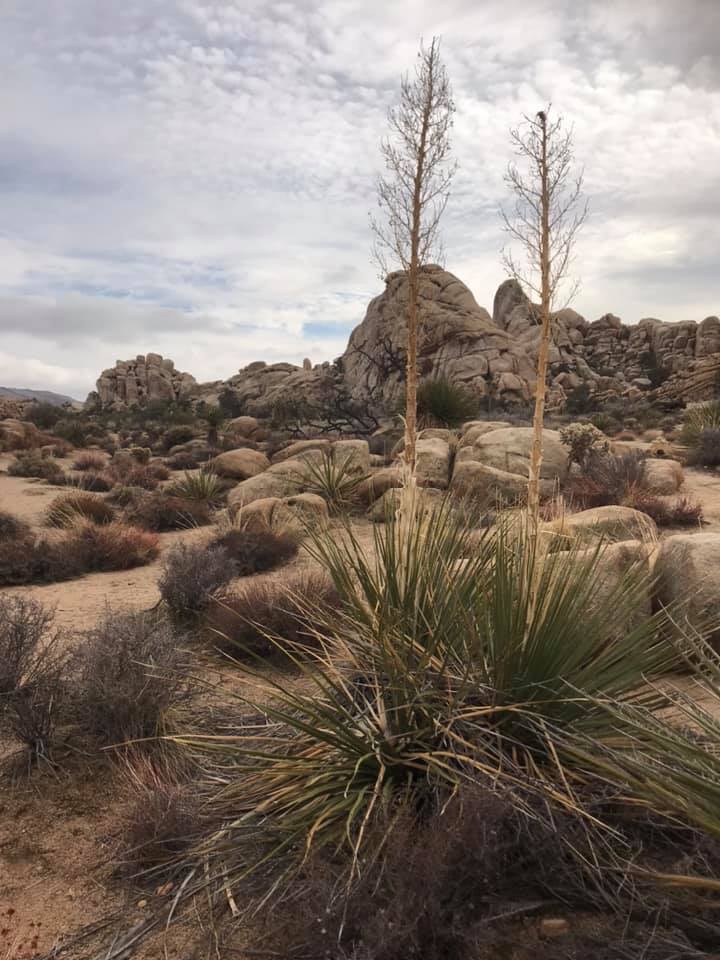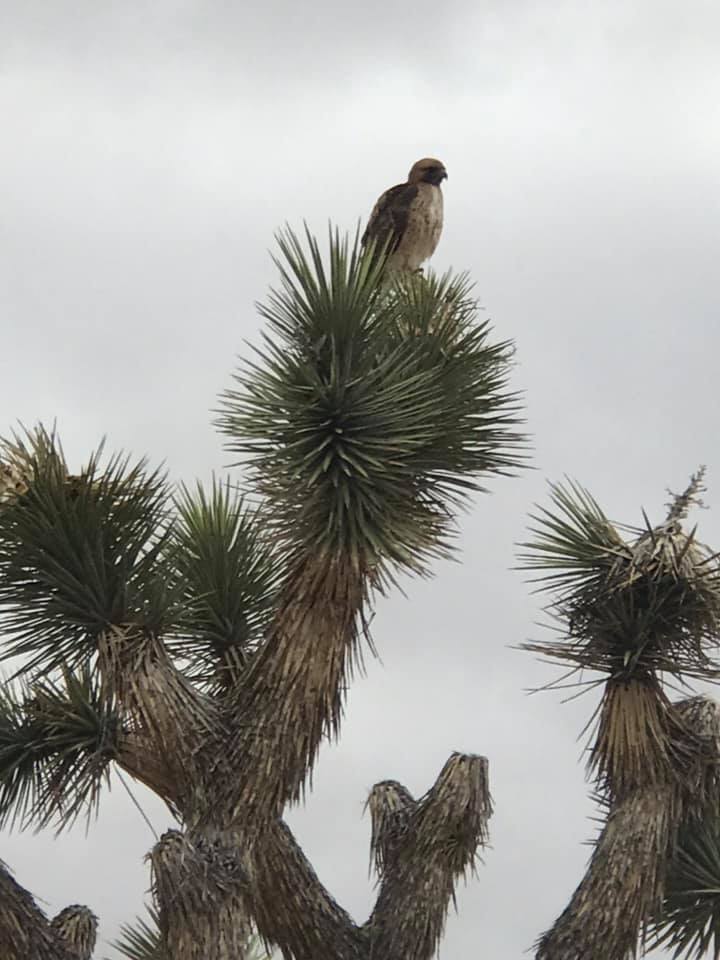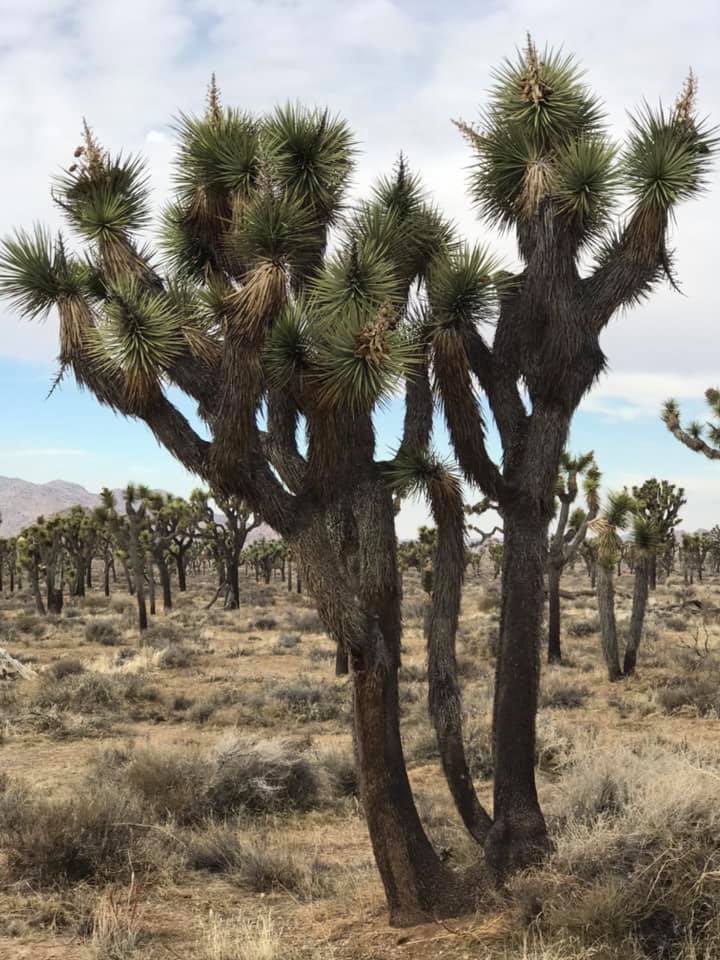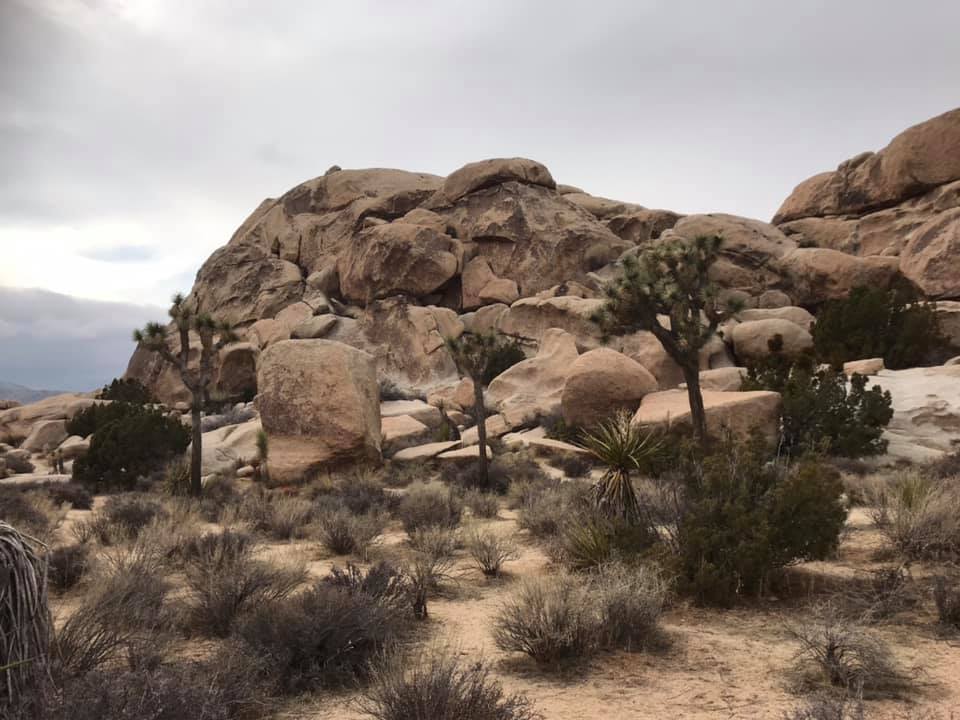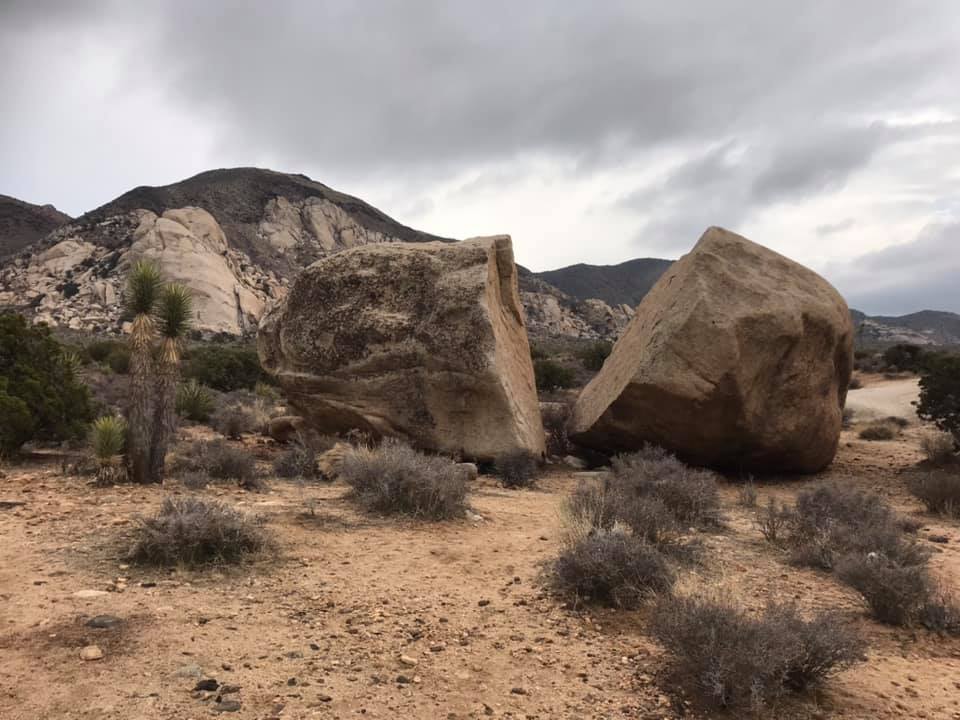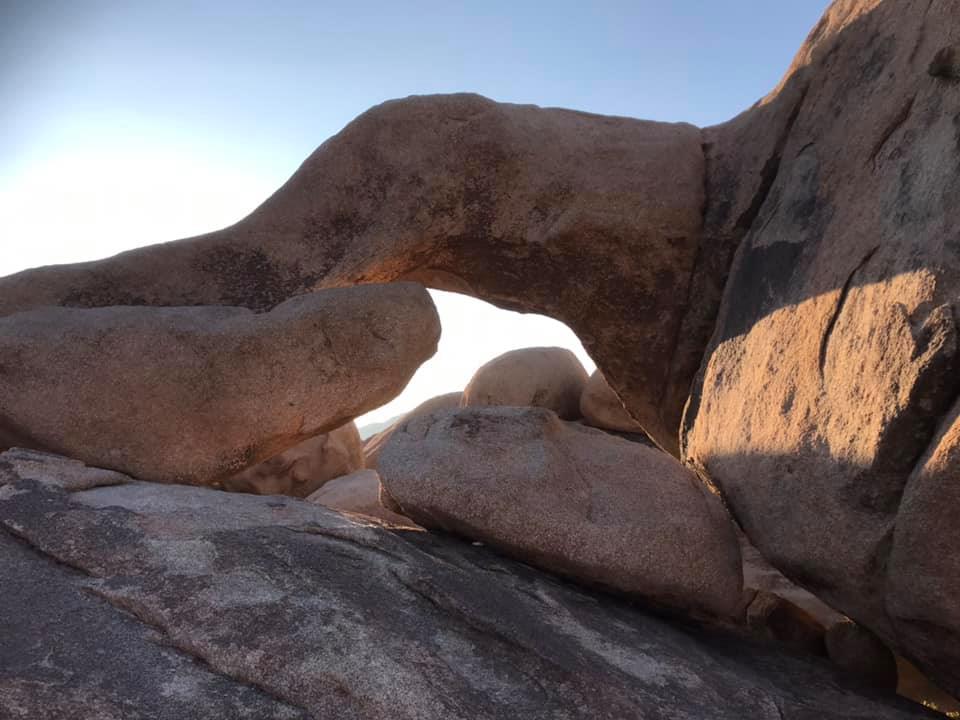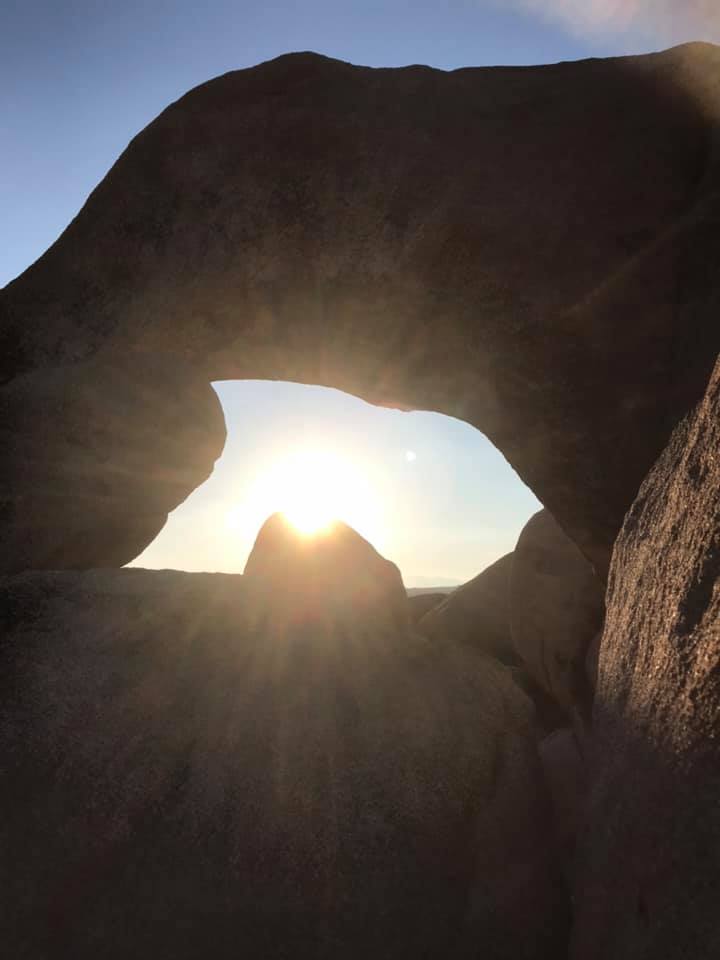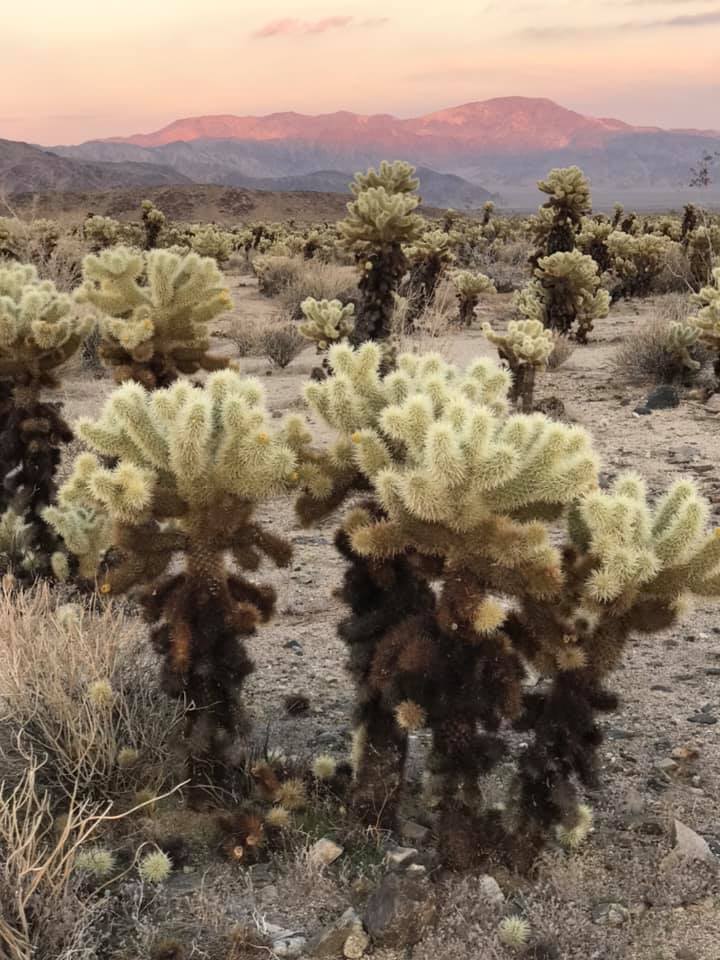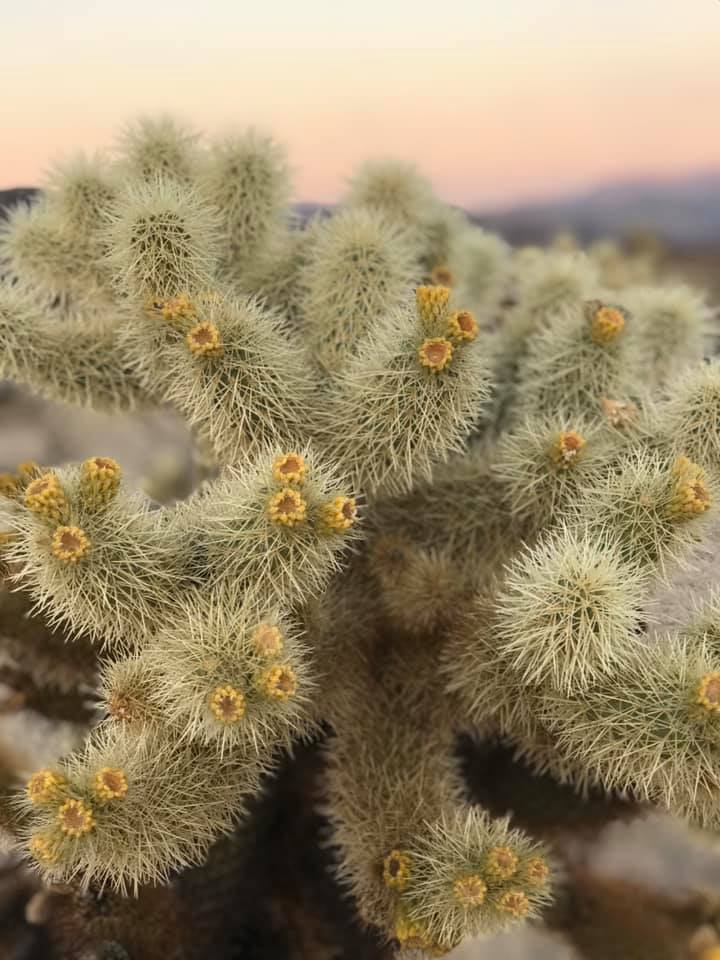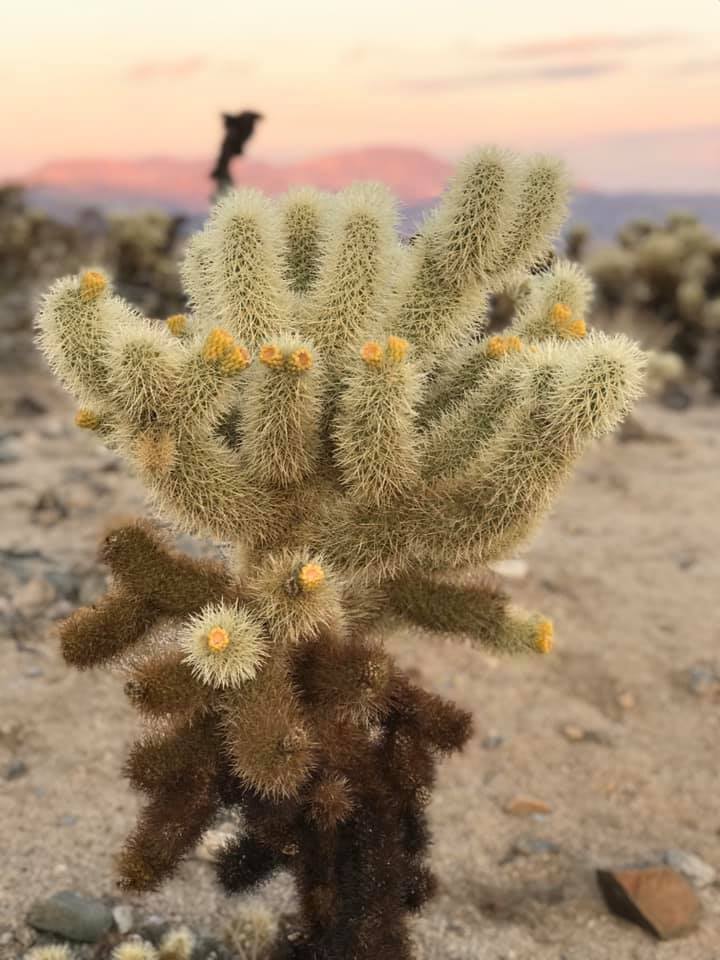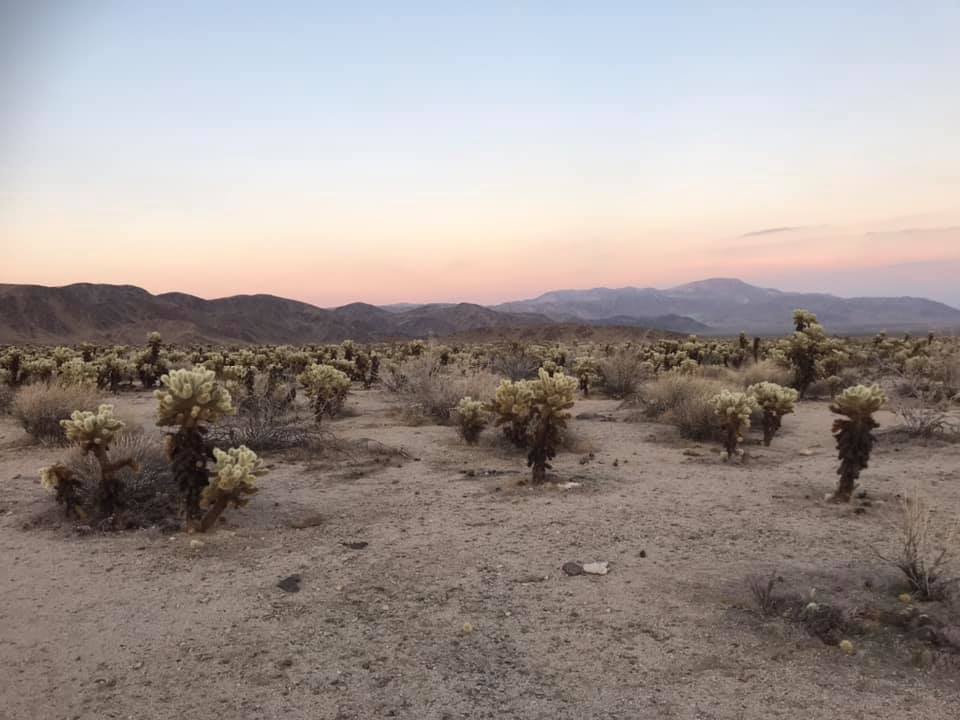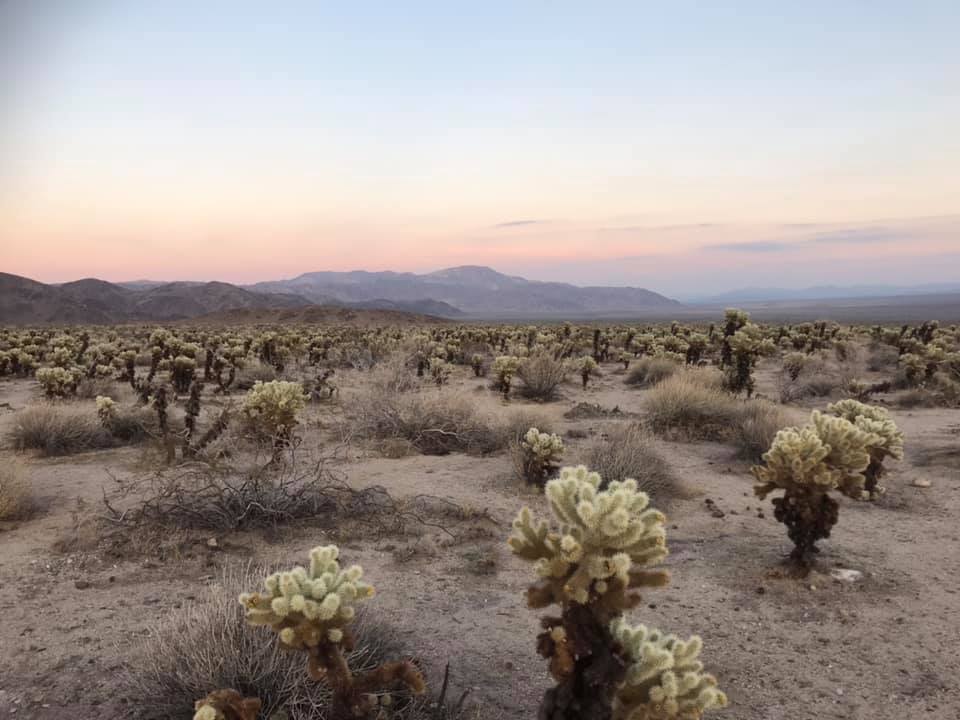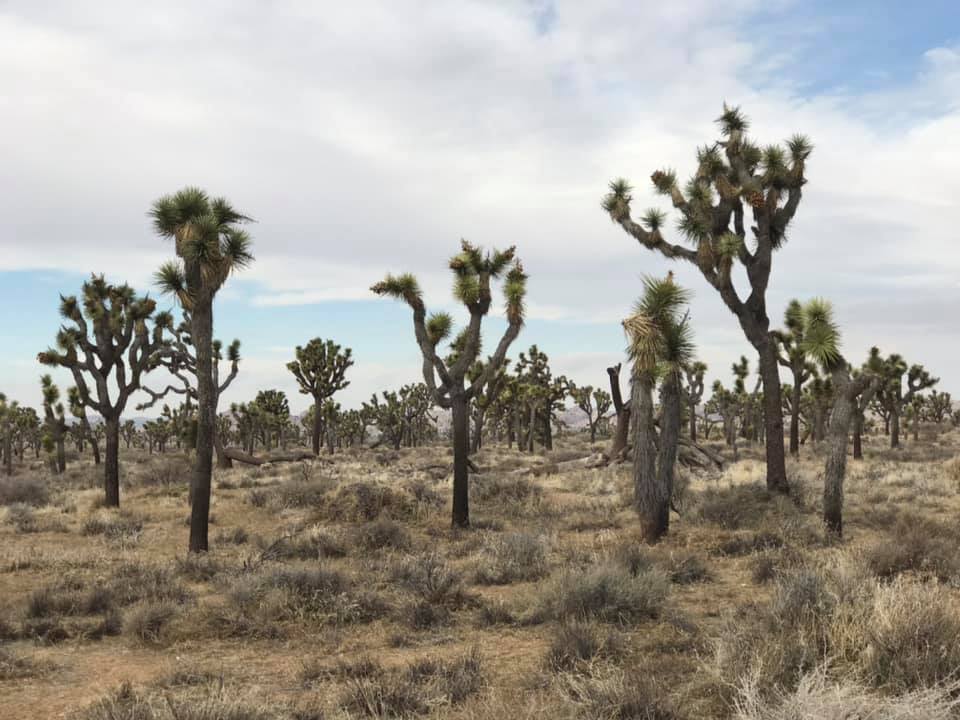
Joshua Tree National Park is a doable day trip from Los Angeles. The drive is about two and a half hours, depending on traffic. I visited this park in January with my brother. We rolled in around noon, which meant we had just 5 hours before sunset. Here is what we did to make the most of it!
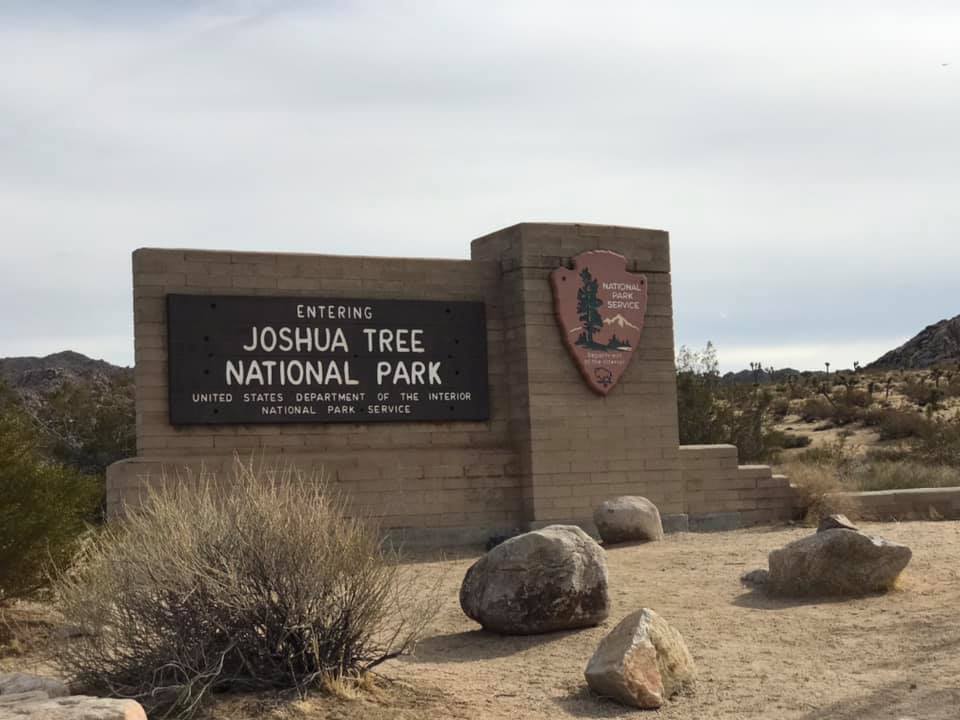
We started our day at the western entrance to the park. Joshua tree has three entrances and we began with the entrance closest to LA, but an argument could be made for driving a little out of the way and starting at the south entrance. There are three distinct ecosystems in Joshua Tree, the Mojave Desert, the Colorado Desert, and the Pinyon Pine and Juniper of the Little San Bernardino Mountains. These ecosystems vary due to their differences in elevation. We travelled from west to east, only going as far south as the Cholla cactus gardens. This allowed us to see a bit of all three regions, but another interesting way to explore the park would be to start in the south and work your way west through all three ecosystems. This would offer one the opportunity to see more of the Colorado Desert along with the Cottonwood visitor center and the Lost Oasis.
Exploring the Mojave Desert
The first area we arrived at was comprised of the plants of the Mojave desert ecosystem, including the namesake Joshua Trees! These trees are only found in the northern areas of the park, but as you can see, they are plentiful.
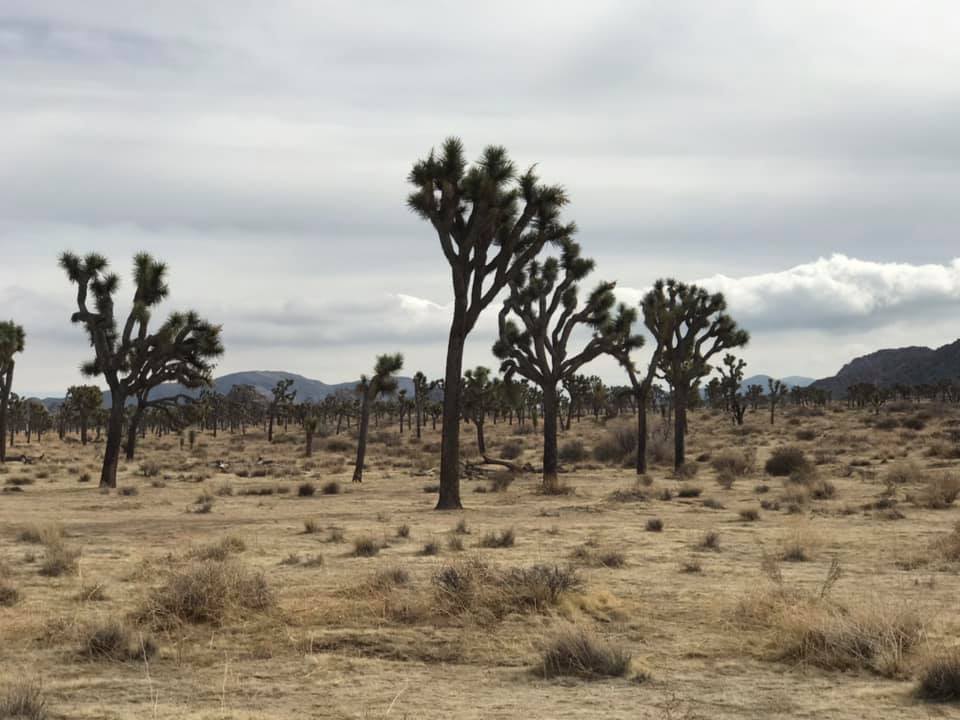
Hiking the Hidden Valley trail
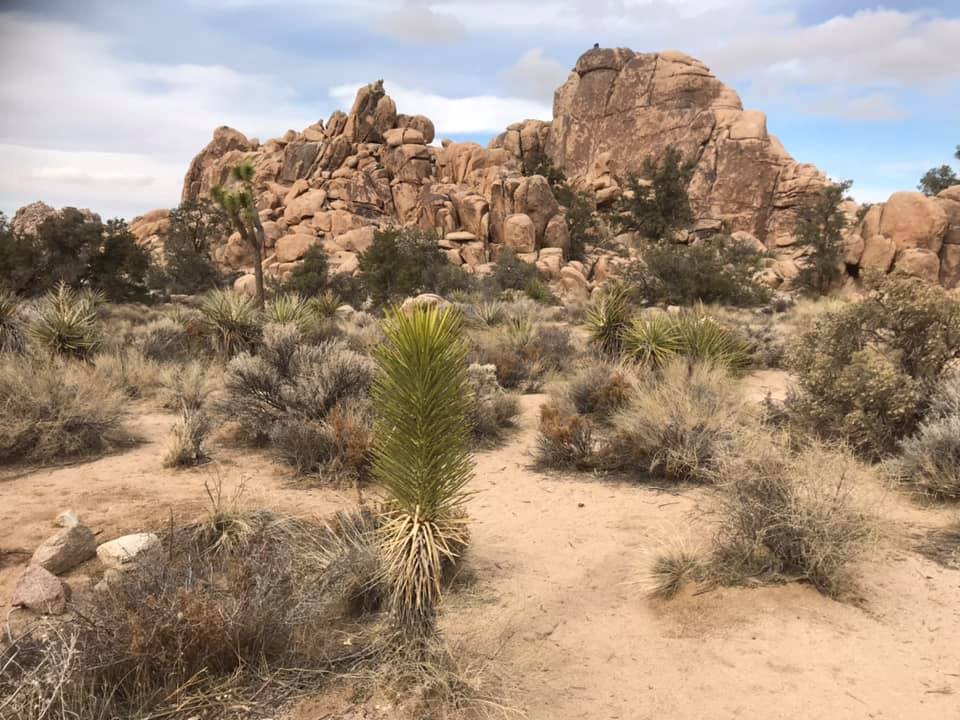
Our next stop was the Hidden Valley picnic area. Here we hiked the 1-mile loop trail around large rock formations. This is a popular area for rock climbers. There was snow on the ground here and there, but I was comfortable in shorts with a jacket.
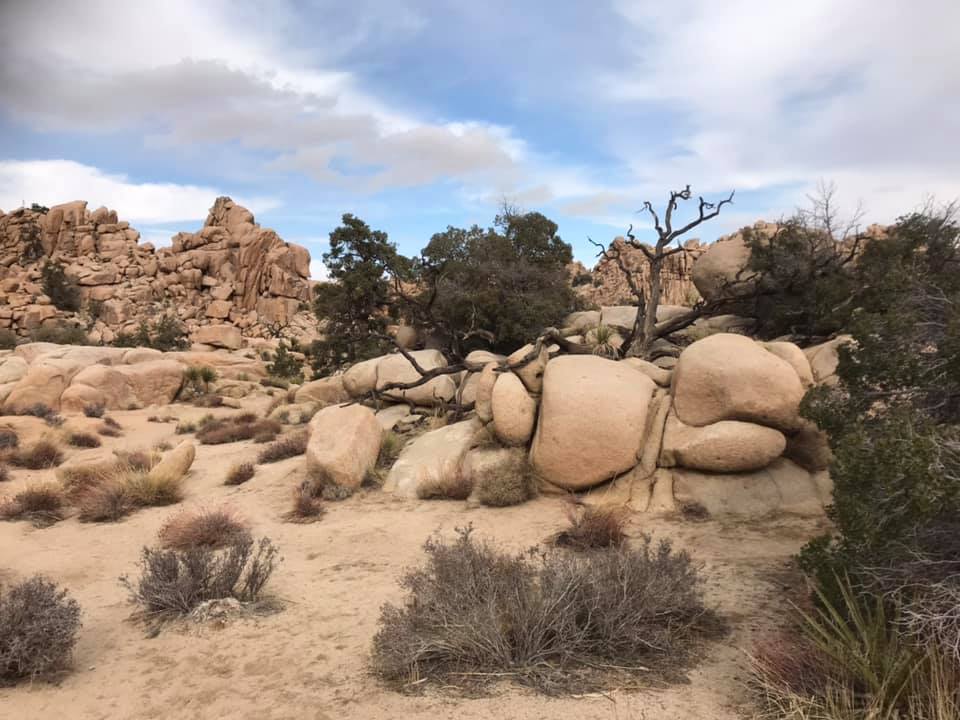
The View from Keys View
For our next stop, we left the main Park Boulevard and headed southwest. We also moved up in elevation. It is the change in elevation that contributes to the variety of ecosystems here. At these higher elevations, the dominant vegetation changes to the Pinyon Pines and Junipers of the Little San Bernardino Mountains.
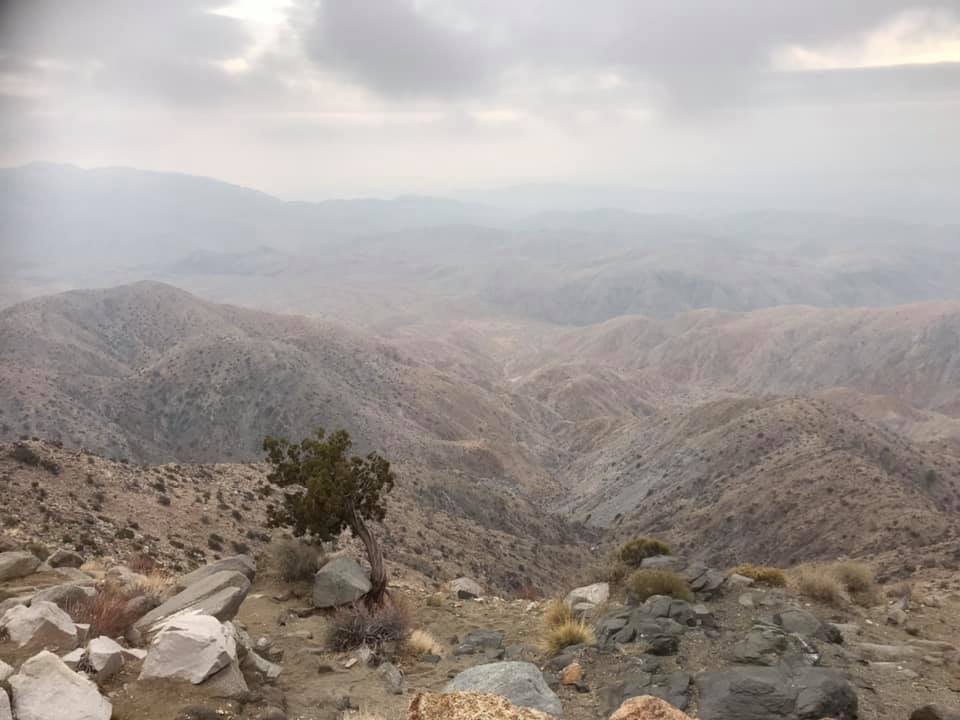
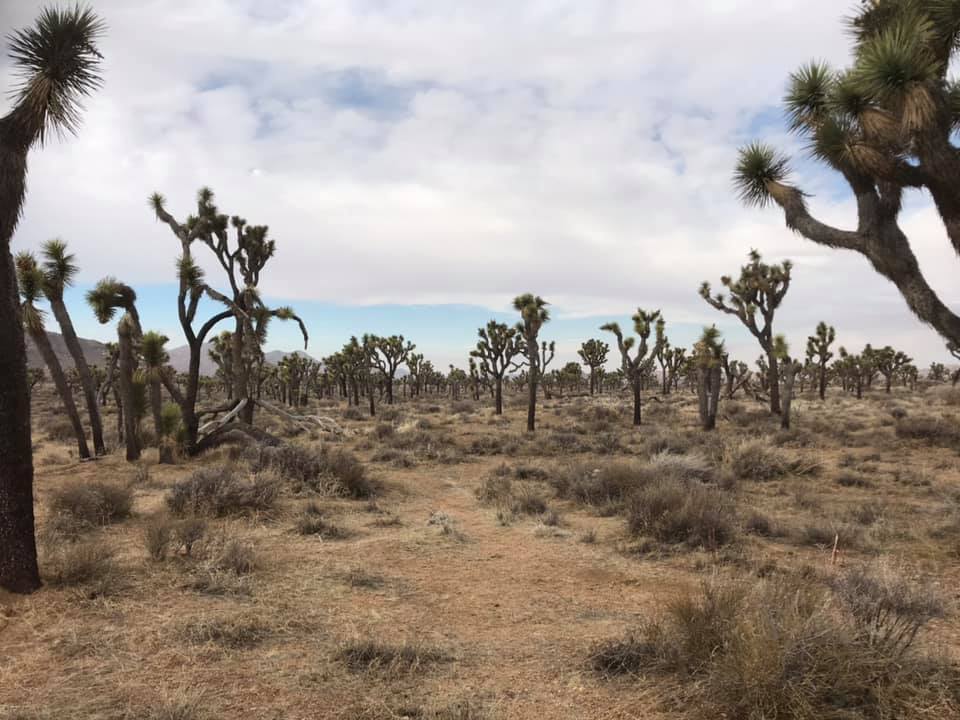
Wandering around the Hall of Horrors
After we returned to the main Park Boulevard from Keys View, we passed Cap Rock. This is a very popular spot in the park, partly because of the mythic association it has with the death of Gram Parsons. We didn’t stop here in favor of a less popular pull off called the Hall of Horrors. It was not, as the name implied, horrible but it did have some interesting rock formations.
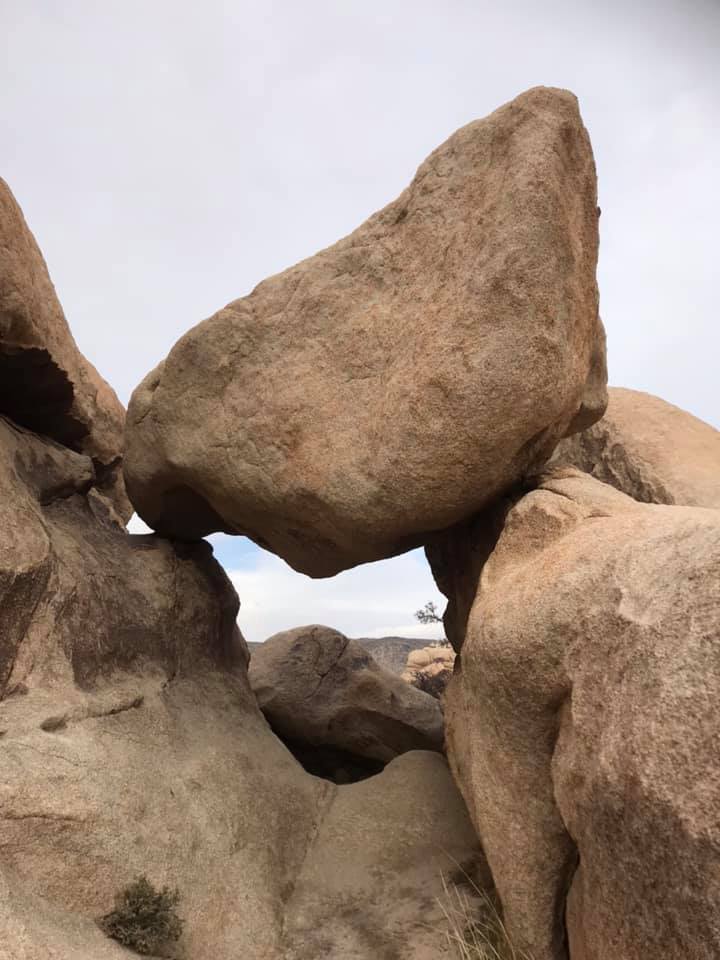
Skull Rock
We made a quick stop to stare into the eye sockets of skull rock and ponder what was in its head.
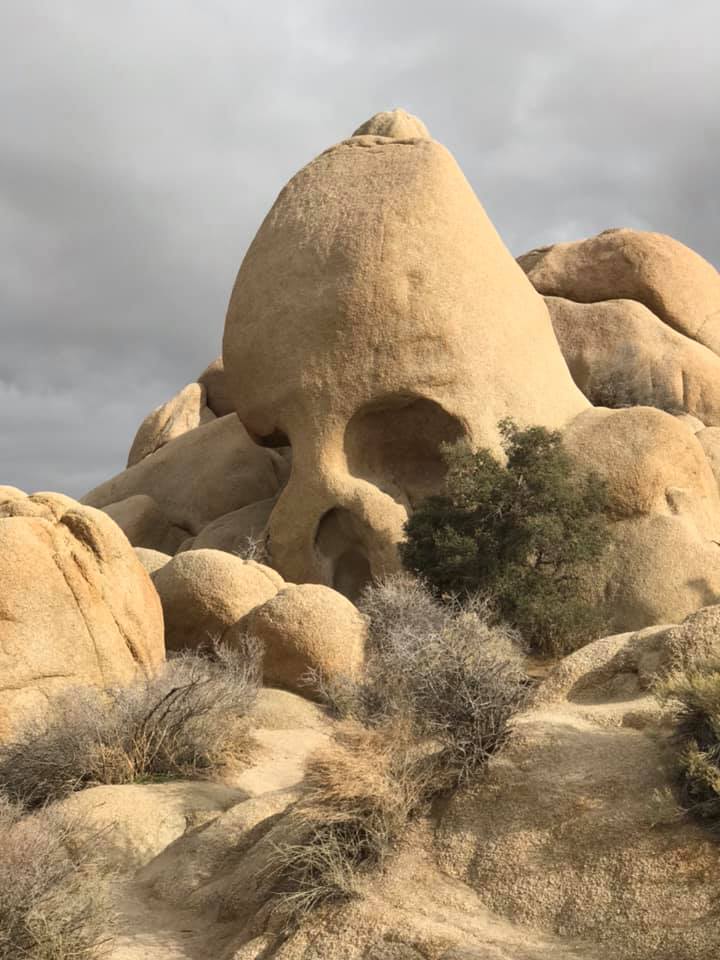
Searching for Arch Rock
The sun started sinking lower in the sky and there were still things I wanted to see! One of them was Arch Rock. Normally accessible from the White Tank campground, this parking area was closed when we visited. We parked up the road and after wandering the landscape a bit, found a trail that took us across the road and to Arch Rock. It was a very cool place to check out as the sun was setting.
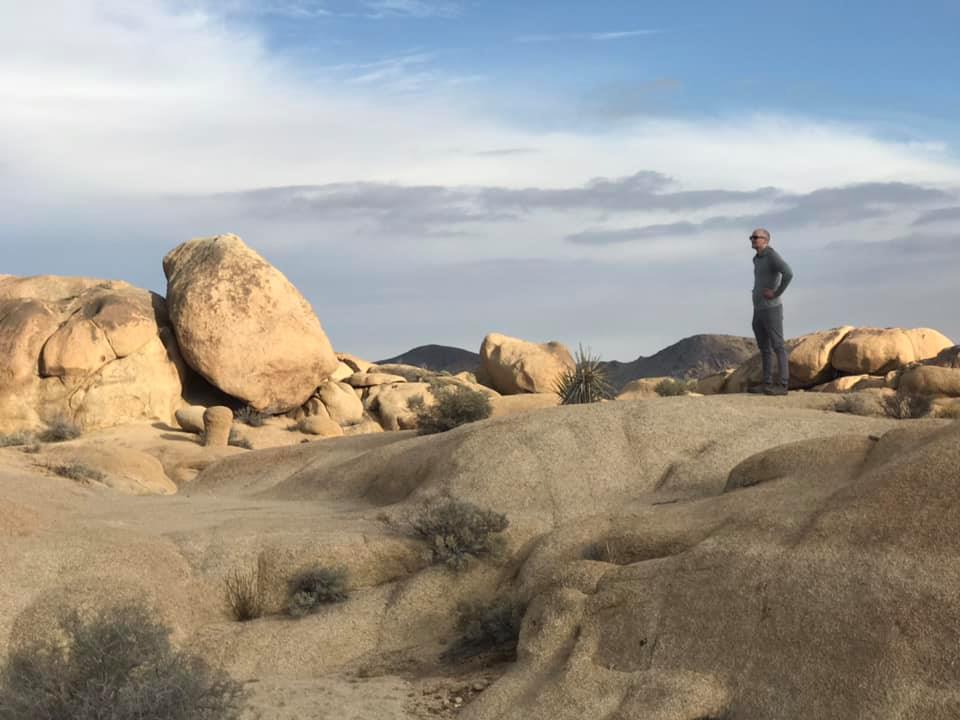
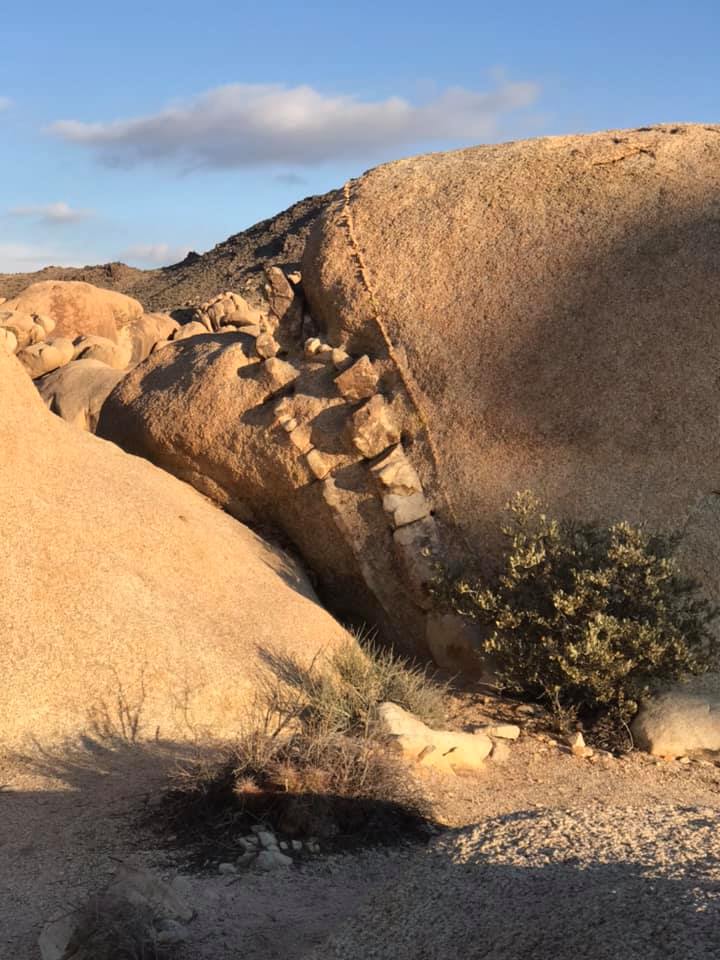
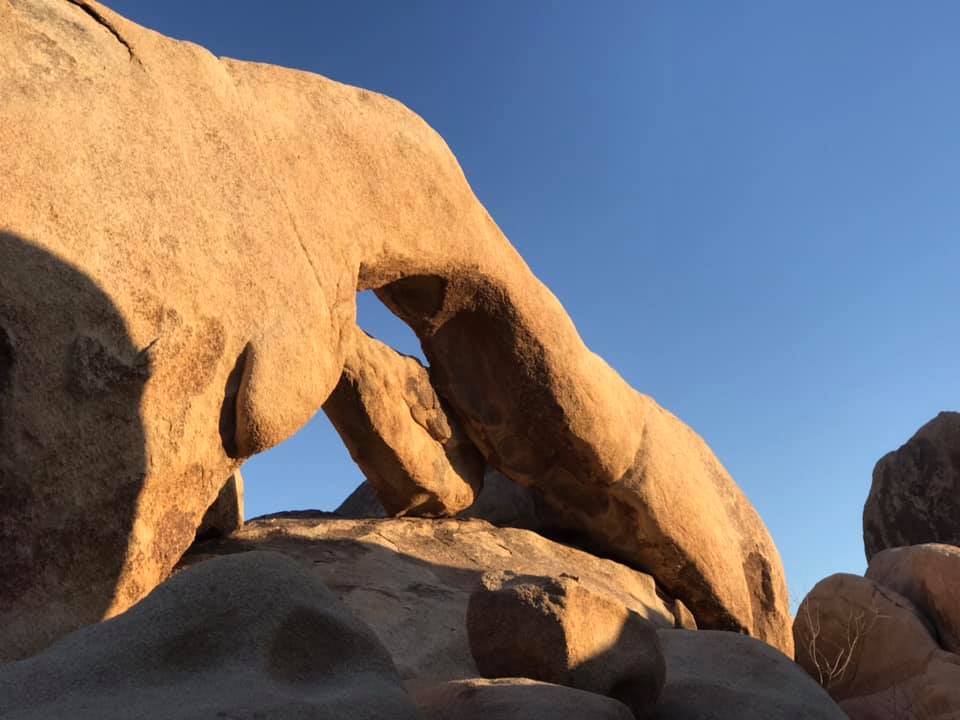
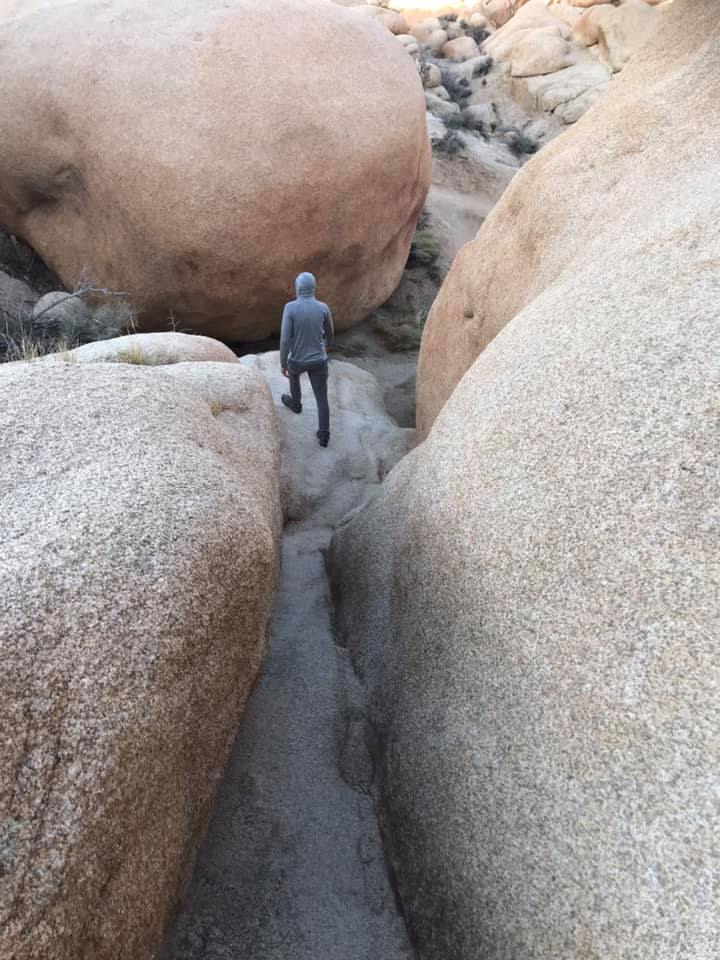
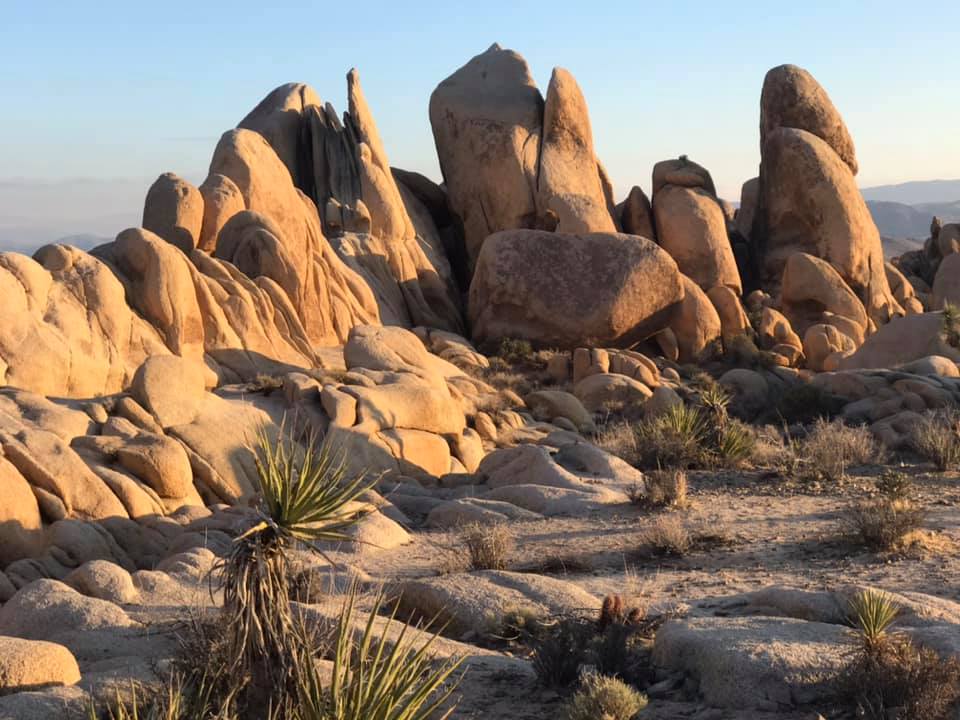
Cholla Cactus Garden
One last stop! We made it to the Cholla Cactus Garden before the sunset and this stop did not disappoint. The cacti were flowering, the sky was lit up in peach and pinks, and we had the time to wander and enjoy this unique area in the third and final ecosystem of the park, the Colorado Desert.
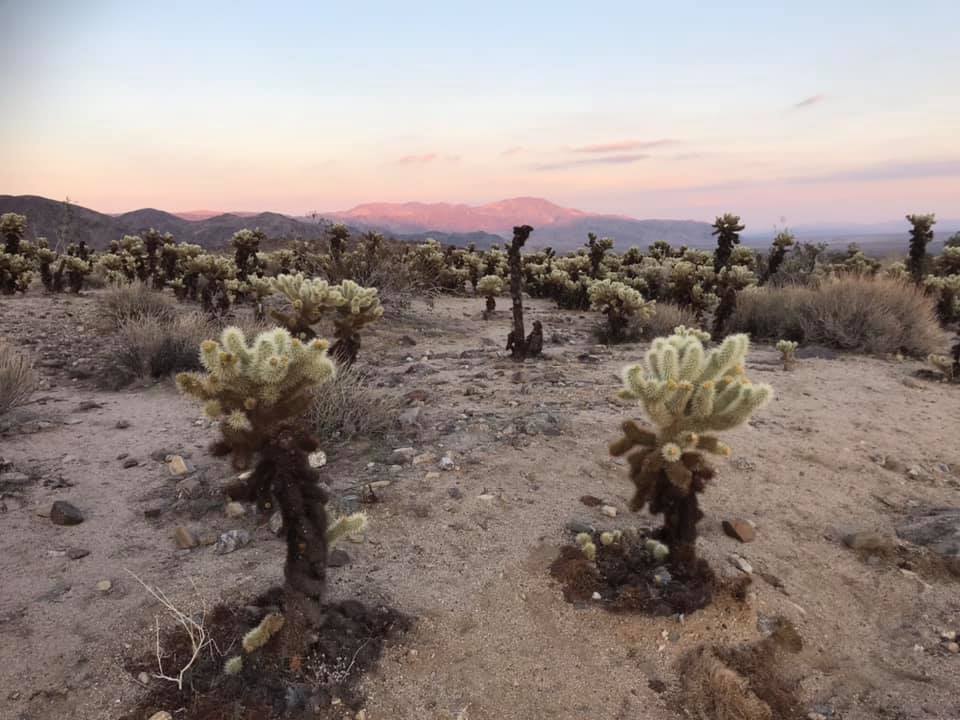
We checked off all 3 ecosystems on our day in the park. As E. O. Wilson said, “Biodiversity is the totality of all inherited variation in the life forms of Earth, of which we are one species. We study and save it to our great benefit. We ignore and degrade it to our great peril.” We are not apart from but a part of this environment. It was a beautiful ending to a day spent reflecting on that.
